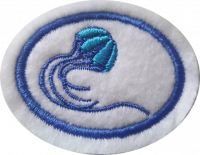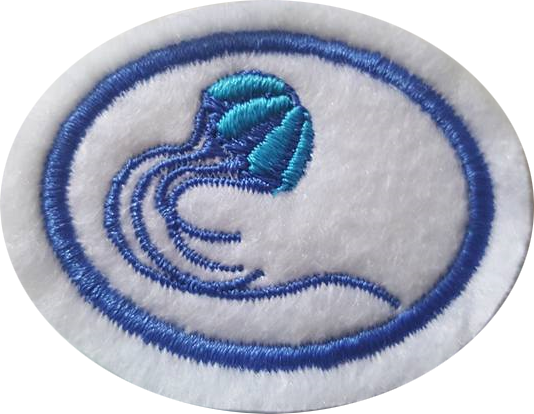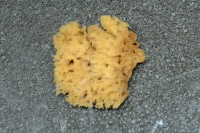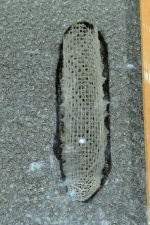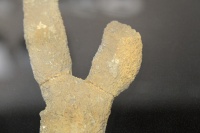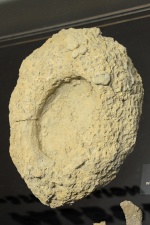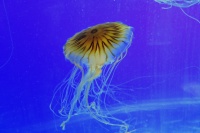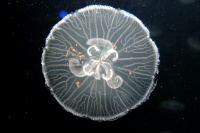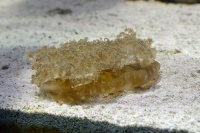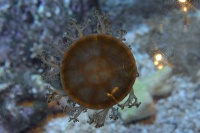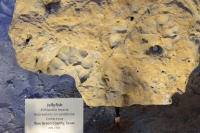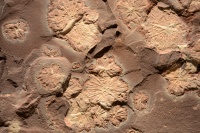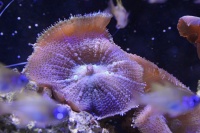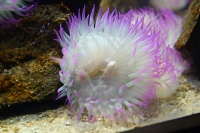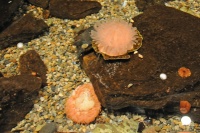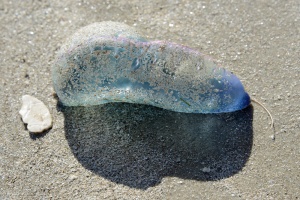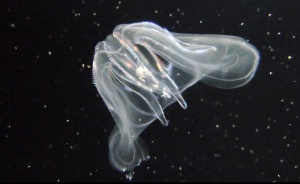Difference between revisions of "AY Honors/Porifera and Cnidaria/Answer Key/pt-br"
From Pathfinder Wiki
< AY Honors | Porifera and CnidariaAY Honors/Porifera and Cnidaria/Answer Key/pt-br
(Created page with "</noinclude> <!-- 9. Esquematizar uma água-viva indicando suas principais partes. -->") |
|||
| (One intermediate revision by the same user not shown) | |||
| Line 2: | Line 2: | ||
<section begin="Body" /> | <section begin="Body" /> | ||
{{ansreq|page={{#titleparts:{{PAGENAME}}|2|1}}|num=1}} | {{ansreq|page={{#titleparts:{{PAGENAME}}|2|1}}|num=1}} | ||
| − | <noinclude> | + | <noinclude></noinclude> |
| − | </noinclude> | + | <!-- 1. Por que as esponjas são consideradas animais? --> |
| − | <!-- 1. | ||
| − | |||
{{clear}} | {{clear}} | ||
| Line 12: | Line 10: | ||
{{CloseReq}} <!-- 1 --> | {{CloseReq}} <!-- 1 --> | ||
{{ansreq|page={{#titleparts:{{PAGENAME}}|2|1}}|num=2}} | {{ansreq|page={{#titleparts:{{PAGENAME}}|2|1}}|num=2}} | ||
| − | <noinclude> | + | <noinclude></noinclude> |
| − | </noinclude> | + | <!-- 2. Por que são consideradas filtradores? --> |
| − | <!-- 2. | ||
| − | |||
{{clear}} | {{clear}} | ||
| Line 22: | Line 18: | ||
{{CloseReq}} <!-- 2 --> | {{CloseReq}} <!-- 2 --> | ||
{{ansreq|page={{#titleparts:{{PAGENAME}}|2|1}}|num=3}} | {{ansreq|page={{#titleparts:{{PAGENAME}}|2|1}}|num=3}} | ||
| − | <noinclude> | + | <noinclude></noinclude> |
| − | </noinclude> | + | <!-- 3. Citar, pelo menos, 2 características das esponjas. --> |
| − | <!-- 3. | ||
| − | |||
{{clear}} | {{clear}} | ||
| Line 39: | Line 33: | ||
{{CloseReq}} <!-- 3 --> | {{CloseReq}} <!-- 3 --> | ||
{{ansreq|page={{#titleparts:{{PAGENAME}}|2|1}}|num=4}} | {{ansreq|page={{#titleparts:{{PAGENAME}}|2|1}}|num=4}} | ||
| − | <noinclude> | + | <noinclude></noinclude> |
| − | </noinclude> | + | <!-- 4. O que significa o nome Cnidário? Quais animais fazem parte deste grupo? --> |
| − | <!-- 4. | ||
| − | |||
{{clear}} | {{clear}} | ||
| Line 65: | Line 57: | ||
{{CloseReq}} <!-- 4 --> | {{CloseReq}} <!-- 4 --> | ||
{{ansreq|page={{#titleparts:{{PAGENAME}}|2|1}}|num=5}} | {{ansreq|page={{#titleparts:{{PAGENAME}}|2|1}}|num=5}} | ||
| − | <noinclude> | + | <noinclude></noinclude> |
| − | </noinclude> | + | <!-- 5. O que são Ctenóforos? O que eles apresentam de diferente dos Cnidários? --> |
| − | <!-- 5. | ||
| − | |||
{{clear}} | {{clear}} | ||
| Line 74: | Line 64: | ||
{{clear}} | {{clear}} | ||
| − | |||
[[Image:Ctenophore_still.jpg|300px]] | [[Image:Ctenophore_still.jpg|300px]] | ||
| − | |||
| − | + | <noinclude></noinclude> | |
| − | <noinclude | ||
| − | |||
{{CloseReq}} <!-- 5 --> | {{CloseReq}} <!-- 5 --> | ||
{{ansreq|page={{#titleparts:{{PAGENAME}}|2|1}}|num=6}} | {{ansreq|page={{#titleparts:{{PAGENAME}}|2|1}}|num=6}} | ||
| − | <noinclude> | + | <noinclude></noinclude> |
| − | </noinclude> | + | <!-- 6. Quais cuidados devemos tomar ao encontrarmos uma água-viva (medusa)? --> |
| − | <!-- 6. | ||
| − | |||
| − | + | {{clear}} | |
| − | |||
| − | |||
| − | + | <noinclude></noinclude> | |
| − | <noinclude | ||
| − | |||
{{CloseReq}} <!-- 6 --> | {{CloseReq}} <!-- 6 --> | ||
{{ansreq|page={{#titleparts:{{PAGENAME}}|2|1}}|num=7}} | {{ansreq|page={{#titleparts:{{PAGENAME}}|2|1}}|num=7}} | ||
| − | <noinclude> | + | <noinclude></noinclude> |
| − | </noinclude> | + | <!-- 7. Em qual ambiente vivem as esponjas? E os cnidários? --> |
| − | <!-- 7. | ||
| − | |||
| − | + | {{clear}} | |
| − | |||
| − | |||
| − | + | <noinclude></noinclude> | |
| − | <noinclude | ||
| − | |||
{{CloseReq}} <!-- 7 --> | {{CloseReq}} <!-- 7 --> | ||
{{ansreq|page={{#titleparts:{{PAGENAME}}|2|1}}|num=8}} | {{ansreq|page={{#titleparts:{{PAGENAME}}|2|1}}|num=8}} | ||
| − | <noinclude> | + | <noinclude></noinclude> |
| − | </noinclude> | + | <!-- 8. O que podemos fazer se formos queimados por uma a água-viva? --> |
| − | <!-- 8. | ||
| − | |||
| − | + | {{clear}} | |
| − | |||
| − | |||
| − | + | <noinclude></noinclude> | |
| − | <noinclude | ||
| − | |||
{{CloseReq}} <!-- 8 --> | {{CloseReq}} <!-- 8 --> | ||
{{ansreq|page={{#titleparts:{{PAGENAME}}|2|1}}|num=9}} | {{ansreq|page={{#titleparts:{{PAGENAME}}|2|1}}|num=9}} | ||
| − | <noinclude> | + | <noinclude></noinclude> |
| − | </noinclude> | + | <!-- 9. Esquematizar uma água-viva indicando suas principais partes. --> |
| − | <!-- 9. | ||
| − | |||
| − | + | {{clear}} | |
| − | |||
| − | |||
| − | + | {{clear}} | |
| − | |||
| − | |||
| − | + | <noinclude></noinclude> | |
| − | <noinclude | ||
| − | |||
{{CloseReq}} <!-- 9 --> | {{CloseReq}} <!-- 9 --> | ||
{{ansreq|page={{#titleparts:{{PAGENAME}}|2|1}}|num=10}} | {{ansreq|page={{#titleparts:{{PAGENAME}}|2|1}}|num=10}} | ||
| − | <noinclude> | + | <noinclude></noinclude> |
| − | </noinclude> | + | <!-- 10. Qual a importância dos recifes de corais? --> |
| − | <!-- 10. | ||
| − | |||
| − | + | {{clear}} | |
| − | |||
| − | |||
| − | + | <noinclude></noinclude> | |
| − | <noinclude | ||
| − | |||
{{CloseReq}} <!-- 10 --> | {{CloseReq}} <!-- 10 --> | ||
{{ansreq|page={{#titleparts:{{PAGENAME}}|2|1}}|num=11}} | {{ansreq|page={{#titleparts:{{PAGENAME}}|2|1}}|num=11}} | ||
| − | <noinclude> | + | <noinclude></noinclude> |
| − | </noinclude> | + | <!-- 11. Qual o maior recife de coral do mundo? --> |
| − | <!-- 11. | ||
| − | |||
| − | + | {{clear}} | |
| − | |||
| − | |||
| − | + | <noinclude></noinclude> | |
| − | <noinclude | ||
| − | |||
{{CloseReq}} <!-- 11 --> | {{CloseReq}} <!-- 11 --> | ||
| − | <noinclude> | + | <noinclude></noinclude> |
| − | </noinclude> | + | ==Referências== |
| − | == | + | [[Category:Adventist Youth Honors Answer Book/pt-br]] |
| − | [[Category:Adventist Youth Honors Answer Book | + | <noinclude></noinclude> |
| − | <noinclude | ||
| − | |||
{{CloseHonorPage}} | {{CloseHonorPage}} | ||
Latest revision as of 12:08, 23 June 2021
Poríferos e cnidários
Nível de Habilidade
2
Ano
2012
Version
03.10.2025
Autoridade de Aprovação
Divisão Sul Americana
1
Por que as esponjas são consideradas animais?
2
Por que são consideradas filtradores?
3
Citar, pelo menos, 2 características das esponjas.
4
O que significa o nome Cnidário? Quais animais fazem parte deste grupo?
5
O que são Ctenóforos? O que eles apresentam de diferente dos Cnidários?
6
Quais cuidados devemos tomar ao encontrarmos uma água-viva (medusa)?
7
Em qual ambiente vivem as esponjas? E os cnidários?
8
O que podemos fazer se formos queimados por uma a água-viva?
9
Esquematizar uma água-viva indicando suas principais partes.
10
Qual a importância dos recifes de corais?
11
Qual o maior recife de coral do mundo?
